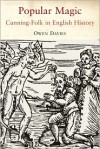LittleMissProcrastination
Reclusive Duck Woman. Artist. Writer. GR Refugee.
Currently reading

Hansen did a pretty amazing job with The Trickster and the Paranormal, as it is something that even a rational skeptic could digest. It's not light reading. It helps to have an inkling of semiotics and deconstructionism, both of which were my displeasure to have studied at Art School. Deconstructionism being the mental equivalent of going cross-eyed.
Getting to the guts of this book.
The Trickster and the Paranormal is basically a philosophical, anthropological, linguistic approach to defining the supernatural, occult or paranormal phenomena, and its liminal, anti-structural properties.
The author presents psi as real, but immeasurable and highly problematic to study. Hansen is a magician and not overtly religious in his stance, but he does stress that unbounded invoking of the phenomena is anti-structural by nature and is linked to unrest and paranoia. Rational disenchantment of the world marginalises the irrational, and keeps the supernatural within bounds. "Rationalization strengthens the boundary between the human and the divine."
Paranormal phenomena originates in the betwixt and between, the border, the threshold, beyond the veil of Maya, the bardo, the numinous. This is the realm of Hermes/Mercury messenger of the gods, the Trickster.
"Hermes (/ˈhɜrmiːz/; Greek : Ἑρμῆς) is an Olympian god in Greek religion and mythology, son of Zeus and the Pleiad Maia. He is second youngest of the Olympian gods.
Hermes is a god of transitions and boundaries. He is quick and cunning, and moved freely between the worlds of the mortal and divine, as emissary and messenger of the gods, intercessor between mortals and the divine, and conductor of souls into the afterlife. He is protector and patron of travelers, herdsmen, thieves, orators and wit, literature and poets, athletics and sports, invention and trade. In some myths he is a trickster, and outwits other gods for his own satisfaction or the sake of humankind.
His attributes and symbols include the herma, the rooster and the tortoise, purse or pouch, winged sandals, winged cap, and his main symbol is the herald's staff, the Greek kerykeion or Latin caduceus which consisted of two snakes wrapped around a winged staff.
In the Roman adaptation of the Greek pantheon, Hermes is identified with the Roman god Mercury, who, though inherited from the Etruscans, developed many similar characteristics, such as being the patron of commerce."
( http://en.wikipedia.org/wiki/Hermes)
Back to the paranormal or supernatural--Hansen states that in mythology, the Trickster god is not negative, but needed at the right moment and the right place to provoke change, and to offer insight. 'Primitive' cultures had rituals, rules and taboos to make sure that a demarkation was kept, restraining or limiting the Trickster's influence from spilling into this world, and instead, using it in liminal times--i.e. birth, death, and coming of age rituals--to facilitate or instigate change.
Unrestrained, unstructured, unbounded, and non ritualised invoking of phenomena, and an accompanying belief, can lead to widespread paranoia, extreme change and unrest.
I can see this type of paranoia reflected in world history. Both the Inquisition and the following Witchcraft Trials were highly liminal events, involving highly liminal people. The Demonologist monks being a prime example. Also the whole era was steeped in mysticism, and belief in paranormal, or supernatural phenomena. This gets back to Hansen's point that psi is immeasurable, and so a broad scale social belief in psi abilities means the sky's the limit. People believed that they could be hexed, cows killed, storms manifested etc. It's also interesting to note that deceit and trickery played a large part in the proceedings. Lest we forget all the poor bastards who died in those tumultuous centuries.
Other anti-structural, liminal outbreaks can also be seen in the hysterical mysticism that motivated or drove the Dancing mania: http://en.wikipedia.org/wiki/Dancing_...and the Flagellants: http://en.wikipedia.org/wiki/Flagellant
Personally, I can also see how unrest is linked to Spiritualism, Channeling and Prophecy--messages from beyond the veil: the Trickster's realm. The End of the World as We Know It by Daniel Wojcik shows how mystic messages shape the lives of many, despite how deceptive and garbled the content is. The Siren Call of Hungry Ghosts by Joe Fisher also highlights the possible deception inherent when dealing with that which lies in the numinous.
What I don't agree with is Hansen's claims that modern day pagans, shamanic practitioners, and those following the wiccan path, are overly encouraging the phenomena. Here I think he is thinking of sorcery--those wishing to seek Solomon's gift of commanding spirits through study of ancient grimoires. But they are attempting it through bounded methods, and careful ritual. (And I also have to ask why that god would allow Solomon to command spirits if he didn't want others to copy him later. Seems mighty odd to me. It's that duality bit again. It does your head in if you dwell on it too long. :/)
In terms of unbridled mysticism I would have thought that certain activities such as talking in tongues, and other offshoot Christian mystic activities, to be far more likely to encourage the phenomena, or Hermes' confusing influence in this realm.
Anyway, I think Tori Amos got it right when dealing with all things otherworldly, strange and sometimes deceptive: http://www.youtube.com/watch?v=cQFe_b...
Now I've struggled with piecing together my thoughts, and writing this weird, rambling review, I'm off to ease my brain with good, reliable, not dualistic beer.









